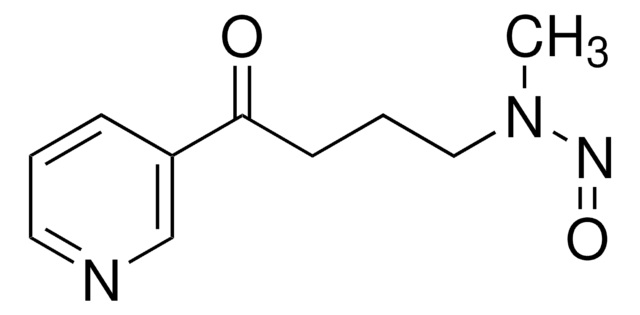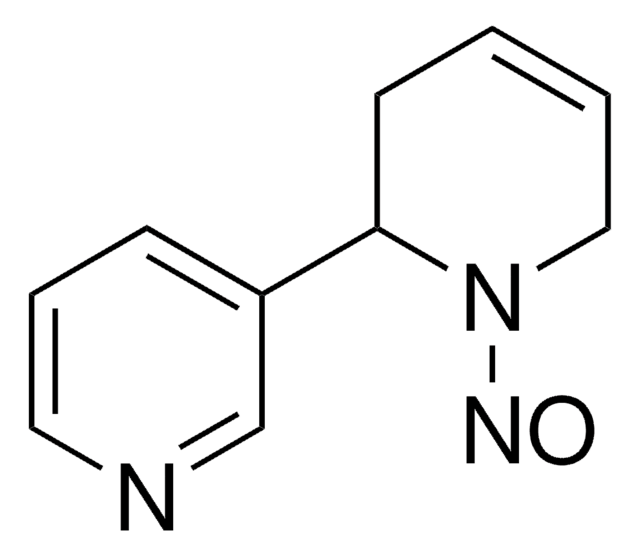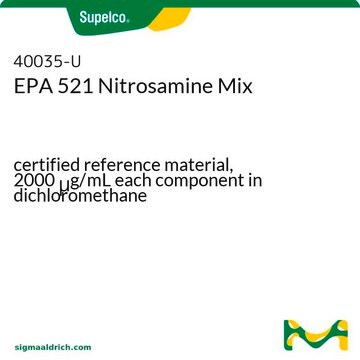59773
4-(Methylnitrosamino)-1-(3-pyridyl)-1-butanol
analytical standard
Sinônimo(s):
NNAL
Selecione um tamanho
Selecione um tamanho
About This Item
Produtos recomendados
grau
analytical standard
Nível de qualidade
Ensaio
≥92.0% (TLC)
prazo de validade
limited shelf life, expiry date on the label
técnica(s)
HPLC: suitable
gas chromatography (GC): suitable
solid phase extraction (SPE): suitable
aplicação(ões)
cleaning products
cosmetics
food and beverages
personal care
Formato
neat
temperatura de armazenamento
2-8°C
cadeia de caracteres SMILES
CN(N=O)CCCC(O)C1=CN=CC=C1
InChI
1S/C10H15N3O2/c1-13(12-15)7-3-5-10(14)9-4-2-6-11-8-9/h2,4,6,8,10,14H,3,5,7H2,1H3
chave InChI
OGRXKBUCZFFSTL-UHFFFAOYSA-N
Categorias relacionadas
Descrição geral
Aplicação
Código de classe de armazenamento
11 - Combustible Solids
Classe de risco de água (WGK)
WGK 3
Ponto de fulgor (°F)
Not applicable
Ponto de fulgor (°C)
Not applicable
Equipamento de proteção individual
Eyeshields, Gloves, type N95 (US)
Escolha uma das versões mais recentes:
Já possui este produto?
Encontre a documentação dos produtos que você adquiriu recentemente na biblioteca de documentos.
Os clientes também visualizaram
Active Filters
Nossa equipe de cientistas tem experiência em todas as áreas de pesquisa, incluindo Life Sciences, ciência de materiais, síntese química, cromatografia, química analítica e muitas outras.
Entre em contato com a assistência técnica










